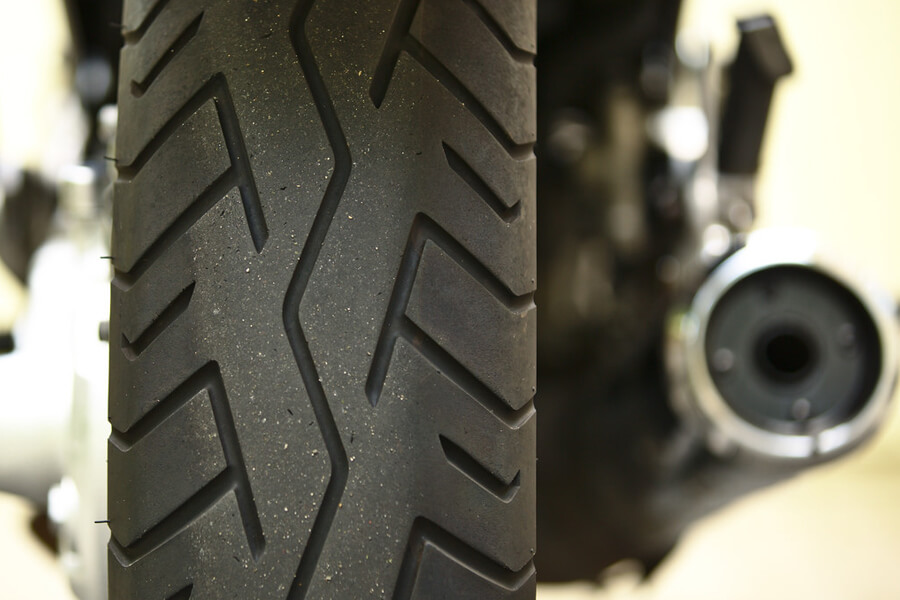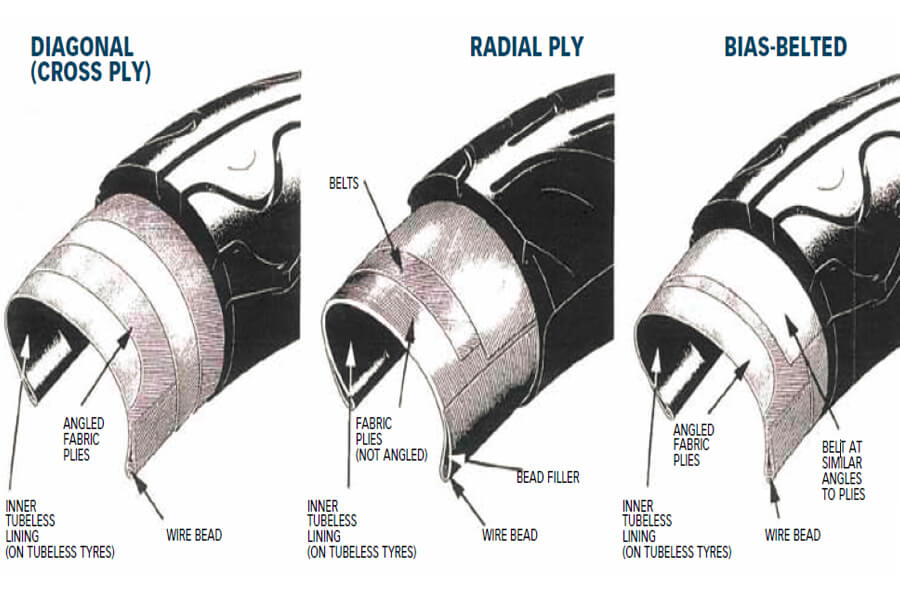Motorcycle Tyres – Types Explained and Classified
A motorcyclist should have good idea about various types of motorcycle tyres and how they are classified according to Type, Usage, Construction & Compound. So which all should we consider while buying a tyre ?
Tyres for motorcycle is like legs for humans. It is the section which is in contact with the ground and controls balance of the upper body. First and foremost what we really need is the grip and if any compromise occurs in this, outcome will be fatal. A motorcyclist should possess good idea about which type is best suited and various factors we need to put into before making a buying decision. So let’s first discuss about different types of tyres and which among them standout from the rest.
Classification can be done in following ways – Type (Tube Type & Tubeless). Construction – (Radial, Cross Ply & Bias Ply), Usage – (Street, Street Sport / Touring, Supersport, All-Terrain / Dual) and Compound – (Hard, Intermediate, Medium, Soft, Supersoft, Full wet)
1. Type – Tube type & Tubeless tyres
First Things first – As the name suggests there is no tube inside tubeless tyres offering plethora of advantages over tube type. Tubeless tyres comes fitted with alloy wheels and tube-type tyres in spoked wheels in almost all cases. Let us clear doubts regarding differences between both in the below table.
| Doubt | Tube Type | Tubeless Type |
|---|---|---|
| Will it get punctured ? | Yes | Yes |
| After puncture ? | Motorcycle cannot be ridden | motorcycle can be ridden for sometime |
| Air leak ? | Very fast and dangerous | Slow & safe |
| Light weight | No | Yes |
| Overheating | Yes | No |
| Stability | Average | Excellent |
| Longevity | Average | Excellent |
| Puncture repair | Tougher | Easier |
| Puncture repair | Tougher | Easier |
| At higher speeds ? | Poor | Excellent |
| Cost | Cheap | Expensive |
| Traction | Average | Excellent |
| Tube present | Yes | No |
| Friction | High | Low |
Absence of tube really makes the difference in tubeless tyres and thus gets away as winner with brownie points. Air leak in tubeless tyres is also slow undoubtedly due to the above reason. If you have money to spend and your motorcyle can accomodate tubeless type then donot hesitate to opt for a set as safety is way more crucial than money.
2. Construction Type – Radial, Cross Ply & Bias Ply tyres
Source: xuanhongtyres.com
Radial tyres absorbs major shocks and impact from the road and are way more flexible hence resulting in comfortable ride. Flexibility arises from the sidewalls of the tyre thus improving tyre contact surface area and stability.
Cross Ply tyres made up of several layers placed diagonally across each other in the tread and the sidewalls. Hence stronger sidewalls and less flexibility is the result which can make it more prone to overheating issues and improving load carrying capacity.
Bias Ply tyres is actually cross ply tyre with added cross layers which deals with the deformation caused by centrifugal forces. High load bearing capacity is the major plus point of this type.
| Feature | Cross Ply | Radial Ply | Biased Ply |
|---|---|---|---|
| Control | Medium | Very High | High |
| Comfort | Medium | High | Very Low |
| Heat Generation | High | Low | High |
| Fuel Consumption | Yes | Low | Yes |
| Noise Levels | Medium | High | Medium |
| Price | Low | High | Medium |
| Load Capacity | High | Low | Very High |
| Longevity | High | Medium | Very High |
3. Usage – Street, Street sport / Touring, Supersport, All-Terrain / Dual
Gone are the days were there was no option for customer to purchase tyres and now due to rapid advancement in technology things are different altogether. Street, Street sport / Touring, Supersport and All-Terrain / Dual tyres are the subsections here. Below table summarizes all the aspects of above ones.
| Feature | Standard Street | Street / Touring sport | Supersport | All-Terrain / Dual sport | Off-road | Racing slicks / Competition |
|---|---|---|---|---|---|---|
| Compound | Hard | Nor soft or hard | Soft | Hard | Hard | Soft |
| Usage | Everyday | Everyday | Track | Everyday | Everyday | Track |
| Longevity | High | Medium | Low | Very High | Medium | Very Low |
| Tolerance | High | Medium | Very High | Very high | Very High | Very High |
| Operating Temperature | Low | Medium | Very High | Low | High | Very High |
| Traction | High | High | High | Medium | Very High | Very High |
| Speed Levels | Low | High | High | High | High | Very High |
| Cornering | Poor | Average | Excellent | Average | Good | Excellent |
| Wet Surface | Safe | Safe | Poor | Excellent | Excellent | Excellent |
4. Compound – Hard, Intermediate, Medium, Soft, Supersoft & Full wet
Hard – Compound type that we see normally in day to day life in commuter motorcycles. Hard compound type offers superb durability but comes at the cost of below par grip. A lot of tread and patterns are present along with cross links in between rubber molecules. As the number of cross links increases grip between tyre and ground decreases.
Intermediate – Not soft nor hard in nature, that is the precise way to explain this compound type. For those who want little bit more performance but donot want to sacrifice the longevity then go ahead with this one.
Medium – Fully reserved for racetracks and for common roads. Here importance is more inclined towards performance rather than longevity.
Soft – Also known as performance tyres which does provide phenomenal grip levels. Number of cross links in tyre structure is very low thus ensuring superb traction.
Super Soft – The fastest among all the compound types and also with the least lifespan. The preferred type for racing aficionados.
Full Wet – It consists of full threads and use of full wet tyres in dry condtions is strictly not advised. Reading name itself provide clear picture.
To sum up, cheating by deceptive ads from tyre manufacturers and words from marketing personnel is very scarce after reading above content. So next time when you visit a tyre dealer you have the substance to talk, discuss and argue.


